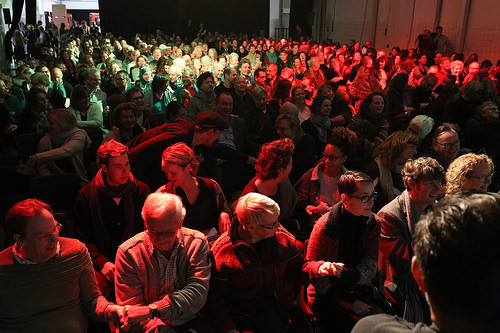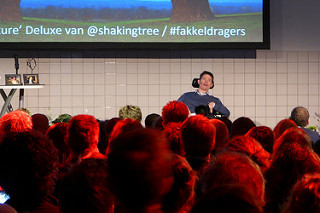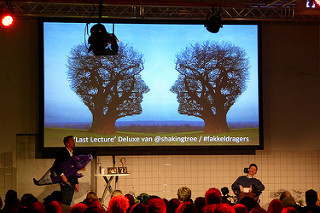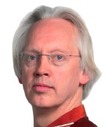Marcel van Marrewijk's Blog, page 139
December 13, 2016
2017 resolutions

2016 has been a big year. I’ve moved countries. I did a lot of things for the first time and I am so thankful for it, but there still is a lot more to be improve and to be done. So that is the reason why I am sharing my next year’s resolutions.
Pop my bubble
After I got surprised that Trump got elected I realised that blocking the people who published opinions contrary to mine is not very healthy. It hurts by I will try and destroy my glittery social media bubble where everyone is all for equality. Let’s see what the others are saying.
Practice what I preach
In 2016 I did better than ever. That doesn’t mean that I don’t have space to improve. Instead of only telling the alternative story, how about living it? I will tell you all about it!
Detox
Last year I did a lot of juice cleansing. Now it’s time for some rule cleansing. It’s very freeing just thinking about getting read of rules that have no purpose at all and affect myself. It can be hard at first letting go of things that we have been taught since we were kids. True is it can be just as freeing as it is hard.
Take care of myself
Well, to get to do something around me I’ve learned that I have to start with myself. Yeah, it sounds cliche, but it’s true. So yes, taking care of myself and doing what makes me well it’s definitely one of my resolutions. Could be one of yours as well.
Set the bar higher
Why not? In a talk with a colleague we spoke about how we fit into the expectations that society puts on us. So why set my own bar higher? 2017 I am ready for you.

The post 2017 resolutions appeared first on Seats2meet.
December 12, 2016
Makro | From wholesaler to marketplace, part II
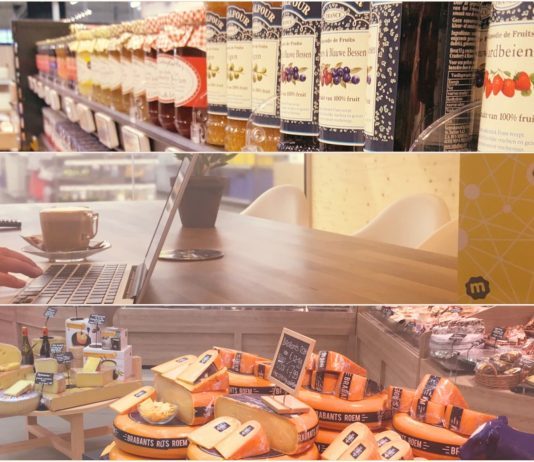
In part I of these series, I have explained to you the challenge Makro Nederland was facing and why the company decided to adapt its business model in order to stay relevant. In short, Makro has decided to become a unique marketplace where entrepreneurs can also meet and get inspired. Makro will therefore step more into the role of a facilitator, handing these entrepreneurs good ideas and smart solutions, so that their time spent at Makro is time well spent.
EMPATHIZING WITH THE CLIENT
Looking for a different approach, Makro sought collaboration with Team Academy, an international school for entrepreneurship, based in Amsterdam. The students of Team Academy are all trained in modern design thinking skills, a methodology that is always human-centered, possibility driven, options focused and iterative.
Doing lots of interviews with Makro clients and using tools like the Business Model Canvas and Value Proposition Design by Osterwalder, they were quickly able to establish the pains and gains of three types of Makro clients:
The New Entrepreneur – is keen on being independent, loves his/her freedom and working in diverse teams, is usually passion and fun driven, has a great network and is a tech-savvy person. There is not much difference between business and social life. He/she could use some support though from experienced entrepreneurs, helping him/her e.g. understand how to handle business operations and how to do develop the right sales and marketing skills.
The Experienced Entrepreneur – perfectly understands the value of a good network around him/her, likes to have his/her own playground and responsibilities. By utilizing his network, knowledge and experience, he/she runs his/her business with efficiency and fun. This experienced entrepreneur is usually a born leader who knows how to convert vision and ideas into practice and understands the importance of sharing knowledge with younger generations. He/she could use some support though on how to benefit from technological tools and how to make work a bit more about fun and passion in order to get creativity stirred up.
The Hospitality Entrepreneur – like The New Entrepreneur, The Hospitality Entrepreneur is very keen on freedom and independence. He/she always has a growing network, will always strive for the satisfaction of the guests, and is always in search of new trends and new challenges. He/she could use some support though on how to handle logistics better, how to avoid unforeseen expenses and how to reach new customers.
WHAT IS?
Doing research and creating personas like this (which of course were much more elaborate than this quick summary), helped Makro to specifically tailor a proposition for its clients. It helped to determine the ‘What is?’-phase, the necessary starting point when wanting to adapt a business model. The main conclusion here was clear: ‘If we already have all these great entrepreneurs in the house, basically the only thing left is to connect them, let them share their knowledge and help them grow that way’. That’s how value is being created.
In the following episode, I will get into the steps that were taken to start implementing this solution.
Wanna have a peek already what is being organized at Makro? Events are both published at the S2M Event Calendar and www.makro-netwerkplein.nl
The post Makro | From wholesaler to marketplace, part II appeared first on Seats2meet.
Shaking Trees: Changing the World, in the Face of Death
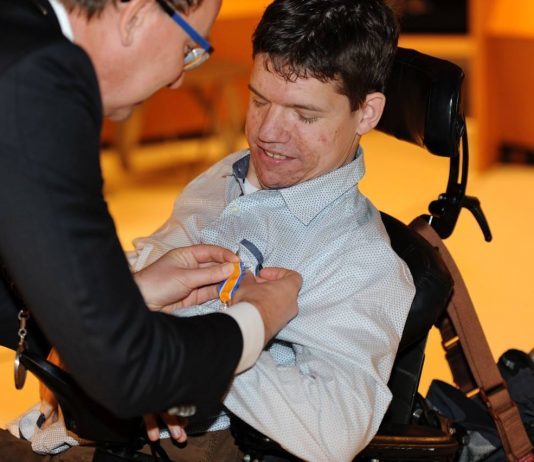
On 10th of December the Netherlands got itself a new knight. Here is his most inspiring story for a good start of the week.
Via Zylstra.org
My friend Niels is dying and is celebrating life. Today he gave his ‘Last Lecture’ (viewable here in Dutch, Niels’ lecture starts at 42:00), following the example of Randy Pausch in 2008, in front of 400 people. He made us laugh, he made us think. He made us connect. So we can continue on after he’s no longer here. He turned us into his torch bearers, fakkeldragers in Dutch. That #fakkeldragers was the number 1 trending topic on Twitter in the Netherlands this morning, even as a major storm passed over and we like nothing more than discussing the weather, tells you a little something about Niels.
I met Niels 10 years ago. He reached out to me online to ask me a question. Today he said to realize your dreams you have to start by asking a question. He asked me about learning online. He was a student then, and despite assurances to the contrary he could not access the univ’s buildings with his electric wheelchair and fully participate in the curriculum (Niels has spasticity and requires daily care). Undeterred he set out to arrange his own education online. We explored Second Life together, and we hung out in knowledge management fora, on blogs and social media. Only some 3 years later we finally met face to face, on a Mobile Monday meet-up in Amsterdam. Later we were both active in the topic of complexity management, and worked together to help build up a new company around participatory narrative inquiry. He married, and became a father, and despite every Kafkaesk requirement the ‘system’ threw at him he cut out his own path and became an entrepreneur. “He does not think it is impossible he’ll hold a regular job” someone wrote in his case file once. Another that he was a difficult patient to work with as “he keeps insisting on creating his own plans”.
His sense of humor not only keeps him sane, but also is his primary ‘weapon’ to create a space to be heard in health care and social care discussions and systems that are mostly accustomed to deciding or talking over him. “My case file never mentions the happinness of our family or the joy I find in my work” as key to personal wellbeing. That also drives him as an entrepreneur, where ever he goes he brings together those stakeholders that normally don’t enter into a proper conversation, and in those conversations plants the seeds to make the social and health care system work better. To replace faceless bureaucracy with a human face. To align the sometimes bewildering logic of the system with the logic of actual life. To make the system more efficient as well as more effective that way. Niels his last name roughly translates into English as Shaking Tree, and that became his brand. Shakingtree Interventions shakes things up. All trees in the Netherlands shook today, because of the mentioned storm, and it seems a fitting tribute.
A testament to him shaking things up is that the Secretary General of the Ministry of Health Care was an opening speaker today. He launched the annual ‘Shakingtree Award’ and presented the first one to Niels himself. At the same time he asked Niels, as he is wont to do anyway, to set the criteria for the Shaking Tree Award. Those criteria center around having experience with the health care system, being able to shake things up, and having a sense of humor.
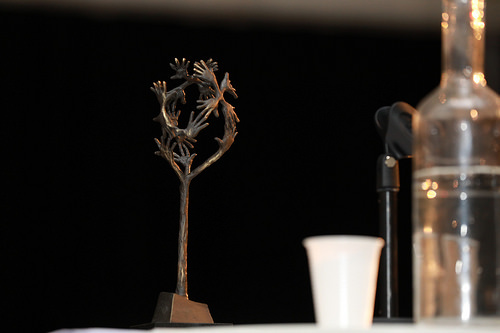
The Shakingtree Award Statue, a tree of touching hands
Even if this maybe, hopefully, isn’t his real last lecture, “I hope I will have cancer for a very long time”, it was a great day to call upon 400 friends, colleagues and strangers to step up and be a torch bearer, a #fakkeldrager. That message, even without his personal shout-out to me to ‘fix this already’ (to use maker spaces to create cheaper tools and adptations), was loud and clear to all I think. Niels wants us to learn how to “dance with the system“, that was his lesson for us today. He is launching a ‘social domain lab’ to continue teaching that.
Today was a good and a fun day, despite the reason why it was organized. Or as Niels quoted Pema Chödrön “We think that the point is to pass the test or overcome the problem, but the truth is that things don’t really get solved. They come together and they fall apart. Then they come together again and fall apart again. It’s just like that. The healing comes from letting there be room for all of this to happen: room for grief, for relief, for misery, for joy.” Over the past 18 months in my personal life I’ve learned (again) that to me beauty resides in that room where such layeredness is allowed to exist. Today reinforced it once more. Thank you Niels.
Article by Ton Zijlstra
The post Shaking Trees: Changing the World, in the Face of Death appeared first on Seats2meet.
Energy Transition: Power 2 the crowd?
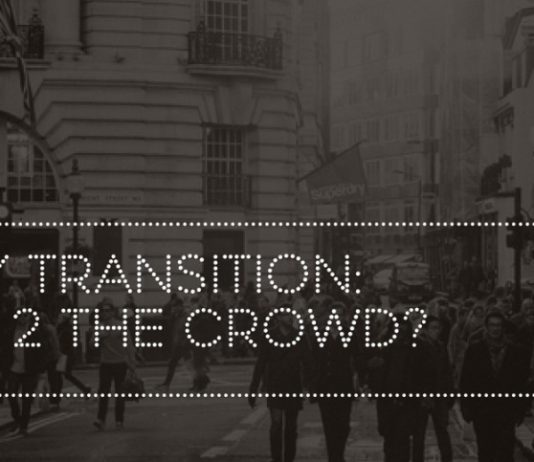
Recently, I was one of the 25 participants in a Delphi research regarding the energy transition. A wonderful experience, especially because it dealt with a subject that isn’t headlining my daily schedule. Meanwhile, the results have been published, though are not yet available in English.
During last week’s ‘inspiratieHUB Delphi Energieransitie’, I got on a soapbox and briefly pitched my opinion about this transition. Finally, I’ve chosen to share what I see happening in the world with a broader audience. My observations may be separated in three phases. Below I’ll share my thoughts:
3 Phases:
Now as a starting point
Pushing against the status quo
From controlling to facilitating
Phase 1: Now as a starting point
Less trust in large institutions and readiness to take action;
Historically low interest rates, big money on the market, and a few market makers with more money than a single country;
Technology and experiments are becoming cheaper;
Emergence of peer2peer platforms > sharing knowledge, money, labour, and stuff, fueled by the increased use of mobile devices;
Startups become extremely scaleable and use ‘reverse technology assessment’ > reversed innovation processes. Doing first, talking later. However, still centrally managed and short-term funded;
Startups are seen as a hype, and not yet respected for its real value;
New technologies making existing parties (publicly and privately) discover/proof there raison d’être anew, especially by asking the short term question about competition and regulation in stead of ‘how to be a more qualified organization / government by using new technologies;
People start to see that property isn’t the most ideal solution (95% of my time i’m driving my Volvo V70 all alone);
People always choose the solution that is best for themselves.
Phase 2: Pushing the status quo
New initiatives are faster than the rest, mostly sprouted form frustration or amazement;
Existing organizations mostly react short term and complain about their legacy is if it were a handicap;
New initiatives are praised to the skies and mature organizations are depicted ‘slow, cumbersome and moribund’
Extremes arise; things are either good or bad. You are either for or against;
Techno-optimism: techniques solve all problems. Result: no responsibility;
Experiments with new organization models and techniques: blockchain, cooperative models, etc.
Entrepreneurial activism, like ‘Follow This’ and ‘Shell’.
Phase 3: From controlling to facilitating
Please understand we’re due to look for balance;
Existing organizations are to see their legacy as more than a handicap;
3 Stakeholders:
Civilian: consumer /prosumer
think for themselves
want more control on where where products originate from
will prefer their own convenience and don’t act rationally
have tools to organize themselves quickly and arrange things for themselves. Financing through crowdfunding, shared property as part of the sharing economy, etc.
Ecosystem lowers thresholds for large groups of stakeholders.
offers consumers segregated niche services
become quickly the best in the niche they inhabit
Parties controlling and managing the bigger picture (they don’t have to be today’s ones)
offer a platform (WordPress) on which a consumer may create its own space and the ecosystem may integrate services
think in all-in-one solutions, take burdens away, and create many new business opportunities.
Platform minded governments (Estonia!), process optimization, influence on robotization, and heavily discussing ‘how to foster a purpose filled life and embrace new developments as opportunities, rather than seeing them as threats…
The post Energy Transition: Power 2 the crowd? appeared first on Seats2meet.
December 9, 2016
To have or to share?
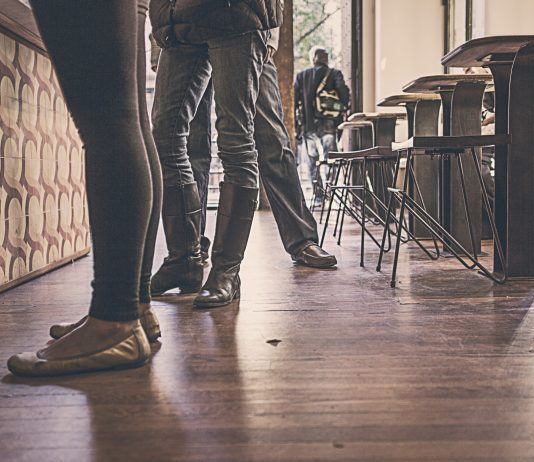
While I was in college back in Brazil we’ve learned the german philosopher Erich Fromm and his book “To have or to be?”. In it Fromm spoke about the change of behaviour and culture following the appearance of new technologies. Back in 1976, when the book was published, the society values changed from having a respectable profession as a doctor, lawyer or an accountant, which is the ‘be’ to the power of acquisition of goods, the ‘have’. Didn’t really matter if you had a ‘respectable’ profession as long as you knew how to make money – and to spend it well.
A while after the book was published a lot of people started talking about ‘looking’ as well. That is a consequence of social media and the glamour of a lifestyle. It doesn’t matter if you don’t have the money to buy it, as long as you can purchase it somehow. The 2008 economic crisis is a good example of the extensions of this. We transform our own reality and we are chocked when it comes back to bite us.
Well, it’s time for a new change of behaviour. One that will surprise us in a great way. The technology is obviously growing, so much that for something to really impress the generation that grew up with a launch after the other is extremely hard. What this generation likes to see it’s how it is being put to use. Let’s take augmented reality as an example. AR has been around for years already and we weren’t that impressed by it, util someone mixed the technology with nostalgia for this generation creating pokemon GO. I don’t have to tell how this story ends, right?
When we think about the companies that are growing not in numbers, but in fans, we can see they all have something in common: a purpose. No, that doesn’t mean they forget about profit. It solely means that they get their profits from something that benefits not only them, but society as well. Tesla became the most wanted car by being not only a top design. It is by being the first electric car that was stylish and can be updated, just like your smart phone. Airbnb profits on something that has been going on for a long time but in a small scale. It simply connects people who wants to go somewhere to the people who are already there. Like Tesla and Airbnb there are thousands of startups making a good use of technology.
More and more people started feeling the benefits of sharing. You have access to what you usually wouldn’t have and you can share what you already have with others and profit from it. What began as a solution for a period of crisis is becoming the new cool. This is when the ‘have’ switches to ‘share’. And the possibilities are infinite. In the last year I lived out of 2 suitcases, I gave away or sold most of what owned. I never needed a car even in a city as big as São Paulo and I’ve been to 5 different countries without checkin in a hotel even once. I’ve shown people the magic of sharing the abundance and testified the wonders of it. And life has never been so fun.
The post To have or to share? appeared first on Seats2meet.
December 8, 2016
Netwerkplein tussen stad en platteland
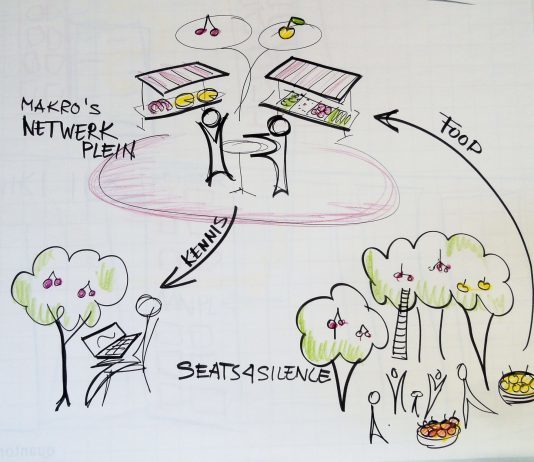
Een onverwachte ontmoeting in een blauwe doos aan de snelweg. Seats4silence & Makro? De enige overeenkomst: beiden zijn partner van Seats2meet. Maar wat is de link tussen
werkplekken in de natuur en een bedrijventerrein?
Terug in de blauwe doos vind je een onverwachte ontmoeting. Het Netwerkplein voor slimme ondernemers, die inkopen, eten, leren en netwerken combineren. Aan de rand van de stad, goed bereikbaar met de auto. De Makro focust steeds meer op lokaal ondernemerschap.
Inspelend op de trend verkopen verschillende filialen ook streekproducten uit de regio. Waarom dan niet ook die ondernemers faciliteren met een ontmoeting en een marktplaats?
En andersom: de bezoekers ook de rust en inspiratie bieden in de landelijke omgeving? Zo kan het Netwerkplein een verbinding vormen tussen ondernemers, producten én plekken.
Voedsel voor lichaam en geest
Voor ieder moment de juiste combi, verrassend en flexibel, lokaal en verbonden. Zie je het voor je?
In het ecosysteem van Seats2meet hebben we 2 soorten verzamelplekken (hubs): de locaties hartje stad die goed bereikbaar zijn met fiets en OV en de ontmoetingsplekken langs de snelweg, die autorijdend Nederland bedienen.
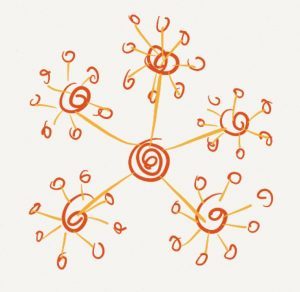
Kleinschalige locaties hebben verbinding nodig met het netwerk. Concrete samenwerking met een hub helpt. Een ideale hub voor Seats4silence is goed bereikbaar met de auto, deelt de waarden van het land en legt letterlijk de verbinding naar buiten en de ondernemers daar. Een hub kan een grote seats4silence zijn, maar ook iets anders – zoals een Makro Netwerkplein.
Welke mogelijke hubs zie jij?
En waar moet een hub aan voldoen? Denk met ons mee onder dit artikel.
The post Netwerkplein tussen stad en platteland appeared first on Seats2meet.
CWE16 – The major coworking trends
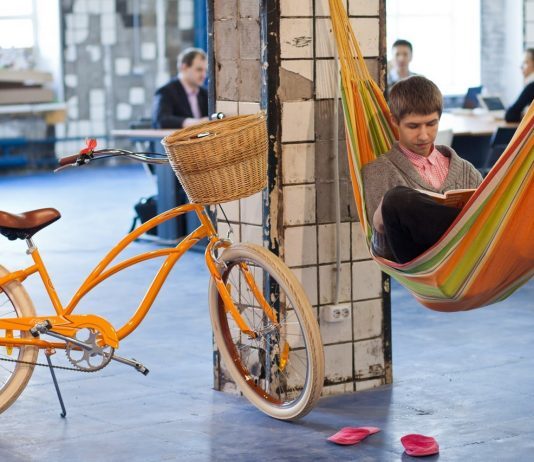
At the coworking europe conference in Brussels we could see something interesting happening. Coworking is definitely not only coworking, and even the deskmeg research proves it. But then what is coworking? We can see a movement happening and it envolves a lot of different factors that end up in coworking as a solution for something way bigger than a place to work, but also for a whole lifestyle that is arising. Wondering why? Follow me on the major trends on the coworking market.
That is a big one and it threatens the current coworking business model. When corporates started seeing the advantages of having a coworking center inside their headquarters they started opening it for everyone, for free. Examples of that in the Netherlands are Achmea, Interpolis and Makro. All of them adopted the seats2meet concept and have an open space for freelancers in their already existing headquarters and shops. Awesome for the coworkers, not that awesome for operators which make their money out of charging a monthly fee for the coworkers. That’s when we go to our next major trend.
Off the grid
With already existing spaces opening their doors coworking operators have to find a new differential for users. In consequence one of the most discussed topics on the unconferences was coworking at rural areas, where corporates aren’t. In this way people can avoid the big cities, where, at the old times we would have to move to get jobs. Commuting also goes down and housing problems. And those are the practical matters, we can also talk about the connectivity with nature and better life quality.
But how to empower and bring people to the coworking spaces that are off the grid? That was big topic of discussion and connecting sounds like the better and most practiced solution. Coworking in off the grid areas as the Canary Islands are connecting to each other. They empower not only each other but the whole area, making it a place for digital nomads for example. The more digital nomads seeing it as a place to be, the more all the coworking scene in that area thrive. The same initiative is happening – and succeding – in other areas as Melbourne and Bourdeau.
Coliving
After coworking the new hype is coliving. After creating communities and spaces where people can work together, the next step is implement it even deeper in people’s life. This time we are talking about where they live. The housing market definitely provides an opportunity for that, being that house in big cities are ridiculously expensive. The nomadic lifestyle also has to look for good short stay places where they can also connect to locals, which is also a great opportunity for coliving. The thing to pay attention is that they both are walking together and happening together at the same places. Let’s see what 2017 brings us!
The post CWE16 – The major coworking trends appeared first on Seats2meet.
December 6, 2016
Meeting of the Future, session 5 – November 28, 2016
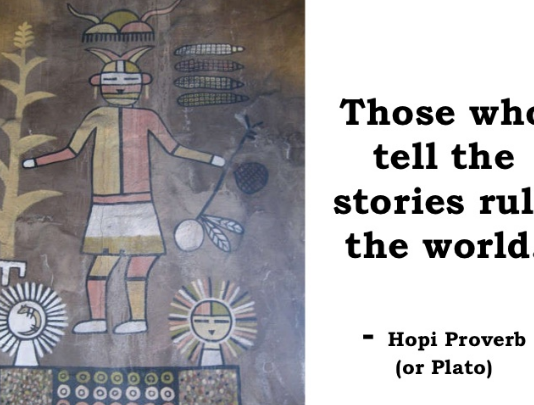
Due to busy schedules at the end of the year, we narrowed down this Meeting of the Future to 2 hours (instead of 4 hours normally), but that definitely didn’t make it less valuable! Of course we all missed the guys from S2M Strijp-S in Eindhoven, as they were throwing their own great event that day. Always something exciting going on within the S2M Ecosystem! Back to the Meeting of the Future. As usual, Ronald van den Hoff kicked off by sharing the latest information on trends in the markets and society with us.
Structures are becoming fluid
It’s clear by now that we live in a society where structures are slowly becoming more and more fluid. An example. Is Airbnb a hotel chain? It’s not. Is it just a marketplace for home-owners to earn some extra money? No. Airbnb now also starts to offer local services, like guided tours and other complementary services for the tourist who rents through Airbnb. The functionality is called Neighborhoods and is being used to learn more about what’s going on in a particular area of a city. So not just rentals anymore, but also tour operator services.
Like Uber now is not only offering taxi rides, but also delivers meals with UberEATS. There are many other examples like this, disrupting the traditional structures. Services are blurring into each other, mobility is key. Of course, S2M is on top of this development. If you can work from anywhere you like, why not also open up your home as a workplace? You can, with S2M for Locals. Apart from it just being a nice way to not work alone and share your knowledge, this is also a great way for refugee status holders to integrate faster within the Dutch society. That’s at least how we see it at S2M!
Tell me a story
As the whole S2M concept is based on sharing knowledge with each other and becoming a stronger ecosystem in a way that we all benefit from it, we zoomed in on storytelling this time. Storytelling is a great tool to make your vision and strategy accessible to others. In other words, to reach and to touch people in their hearts. We found Arianne Wienke from It Starts with A willing to share some of her expertise on this in a mini masterclass.
Arianne took us through three elements: 1. The Power of Storytelling, 2. How to build a Good Story and 3. Ways of Storytelling. She took us back to the time when people were telling each other stories around a campfire. Why stories? Because stories make it easier to remember a message. She explained this by showing us how the brain works when you are told a story.
The power of storytelling is that you take people with you on your journey. You let them in on your vision, on your strategies, on what is important to you. You share your knowledge. As a result, people will get to know you (and your company) a bit better and remember what your challenge is. It will lead to more involvement. All memorable stories are build up of specific elements, like a pattern. Arianne showed us this video about how the story of the movie The Matrix was build up. So… have a message to share, any message? Tell me a story! Arianne rounded up her mini-masterclass with this beautiful ancient saying: Tell me a fact, and I will learn. Tell me the truth, and I will believe. Tell me a story, and it will live in my heart forever.
P.S. After this session, I have shared a poll by email with participants to ask how you would like to see the Meeting of The Future shaped in 2017. Want to share your opinion as well? You can still answer the questions here.
Want to learn more on Society 3.0 and download the book of Ronald van den Hoff, co-founder of Seats2meet? Click here.
The post Meeting of the Future, session 5 – November 28, 2016 appeared first on Seats2meet.
“Slow Work” – A Lifestyle Conquers The Working World
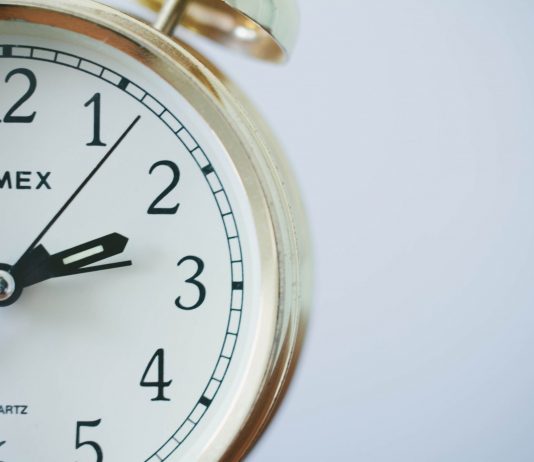
Time has become a scarce commodity in our industrialized world. The increasing complexity of the working world through digitalization and the associated globalization are taking their toll. For the individual, this means:
• Constant pressure of time
• Stress
• Increasing error-proneness
• Extra hours
What is “Slow Work”?
The idea of “Slow Work”, a workplace variation on the popular lifestyle movement “Slow Food”. It is about moving through life more consciously, taking the time for the little pleasures of everyday life and dealing with mind and body spiritually.
Health and happiness are the focus of the “Slow Movements”. You are thus expressing a time of reflection, away from materialism and the eternal pursuit of more money, more success or more achievement. Instead, the focus is on the work-life balance, full-time work deviates from part-time agreements, and flexible working-time models become the focus of employer branding.
Younger generations want less work and more leisure, more individual happiness, and more health. Therefore, “Slow Work” seems to be the right solution since it takes the stress out of the workplace and thus leads to long-term mental and physical well being.
When people hear the term “Slow Work”, they immediately think of the lazy colleague who comes late every morning, or the less talented trainee, who needs an eternity for even the simplest tasks. People believe that “Slow Work” is something for losers at the lowest end of the career ladder. The successful man has no time for “Slow Work” let alone to sleep (#powernap) or jog (#powerwalk).
According to Gail Kinman, Professor of Occupational Health Psychology at the University of Bedfordshire, the concept of “Slow Work” is even more productive. By slowing down the work, you give your body the opportunity to regenerate. The general stress level drops as your concentration and creativity rise again. People have more energy resources and performance over the long term.
“Slow Work” does not mean that you simply work slower, but that you make things more mindful and thus also more concentrated – but without time pressure or hassle. “Slow Work” works like this:
1. Create a short daily schedule in the morning and calculate twice as much time for each point on this to-do list than you would estimate.
2. Take breaks and use these short breaks for a little small talk among colleagues or networking via Xing, LinkedIn & Co. Professional success depends on 60 percent of your contacts.
4. Be sure to avoid any multitasking. You only should check your inbox twice a day – not every five minutes.
5. Actively add relaxation periods to your everyday life, for example, a little yoga in the morning.
6. Be patient – because you have already learned: “Slow Work” is a concept based on long-term success.
“Slow Work” can also mean a change in the work/time model
Those who do not want to rise in the hierarchy and strive for a great career, but who want to integrate the minimalism principle of the “slow” movement into their lives, can also think about a change in their personal working-time model. “Slow Work” can also mean simply working less. The opportunities are varying and always dependent on the individual job as well as the company. The possibilities are part-time employment, home office or sabbatical.
In principle, the “Slow Work” movement is to be assessed as an entirely realistic model. It does not always have to be higher, faster, wider. On the contrary, the more peace we bring back to the modern working world, the more healthy and efficient the society will remain.
The post “Slow Work” – A Lifestyle Conquers The Working World appeared first on Seats2meet.
December 1, 2016
CWE16 – And the big winners are…
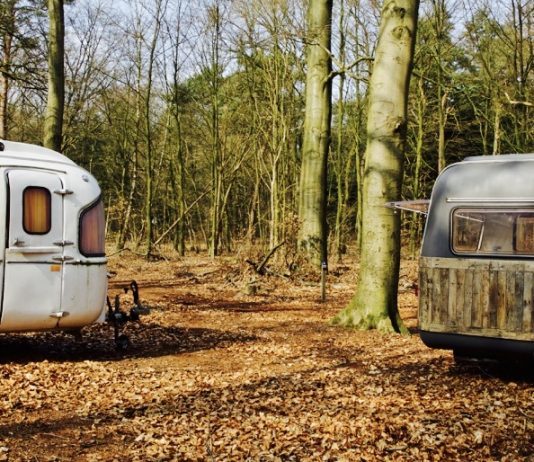
For the first time ever in the coworking europe conference there were awards. One in the category design and one in community action. The jury? Everyone who went to the conference. More than 50 coworking related initiatives applied and on Tuesday the 2 winners were announced.
On community award the winner was Smart Office, from Belgrade, Serbia. The community initiative was called Refugee Fundraiser Quiz Night – they hosted a quiz night with their coworkers so they could have a good time bonding and fundraising at the same time. The participants could donate clothing, hygiene items, food and water, plastic bags for packing, baby products, blankets and other items. The result? Collecting of the money provided 100 meals for refugees and the Smart Office is now a place not only for working, but also philanthropy. A round of applause to Miroslav Mijatov and the whole Smart Office crew for the awesome initiative!
Now to the best design award! The great winner was KantoorKaravaan, which we already spoke about here. The Dutch initiative is all about going back to the nature. They remade caravans so they can serve as an office for coworkers that seek for the connection to nature. Some of them are designed for a quiet and focused day at work and others for a collaborative meeting. Another great point about KantoorKaravaan is that they can go anywhere! During the summer they move around in the Netherlands and right now they are in a Safari through the rural areas in Spain. They are also in partnership with seats4silence! Way to go, Manon!
The post CWE16 – And the big winners are… appeared first on Seats2meet.

